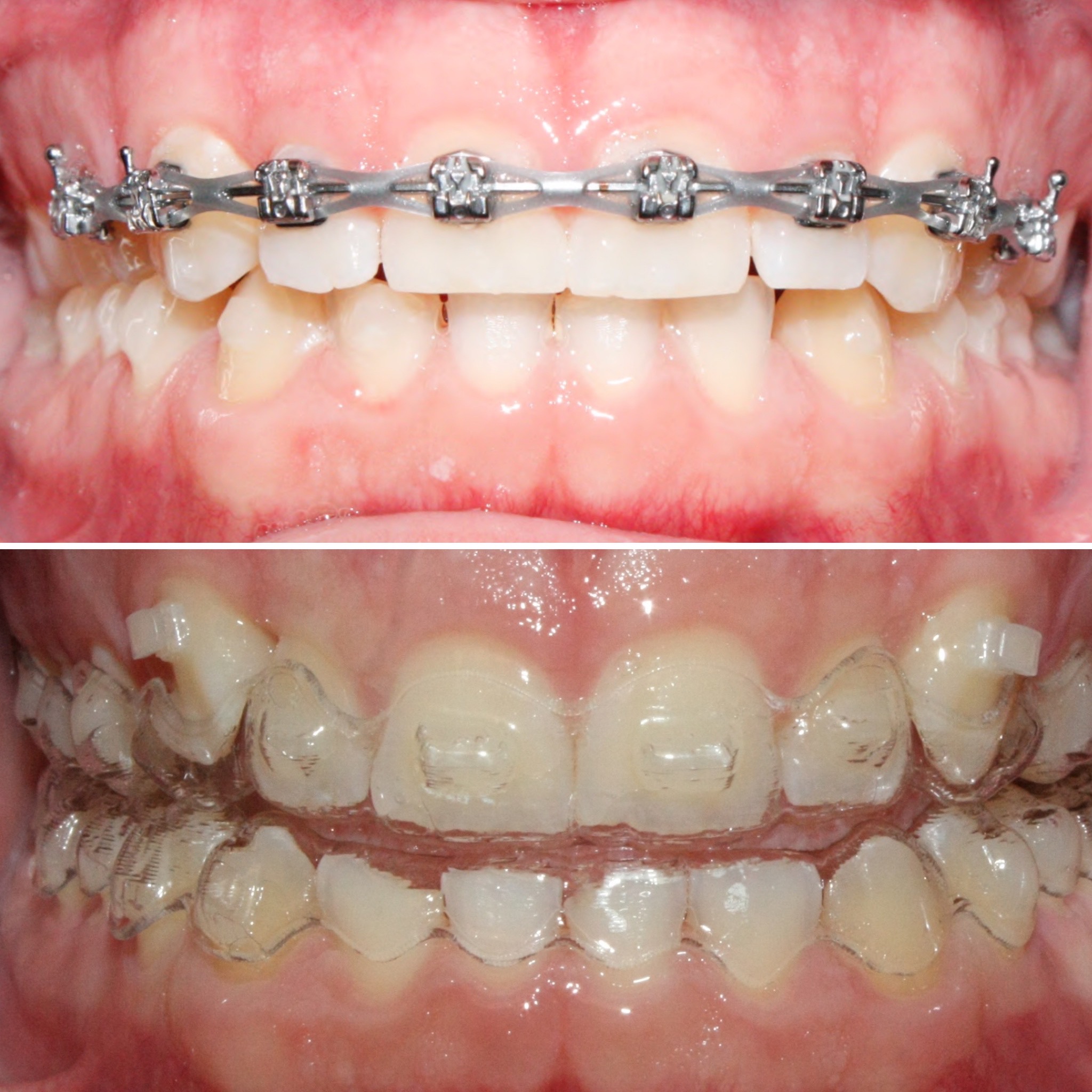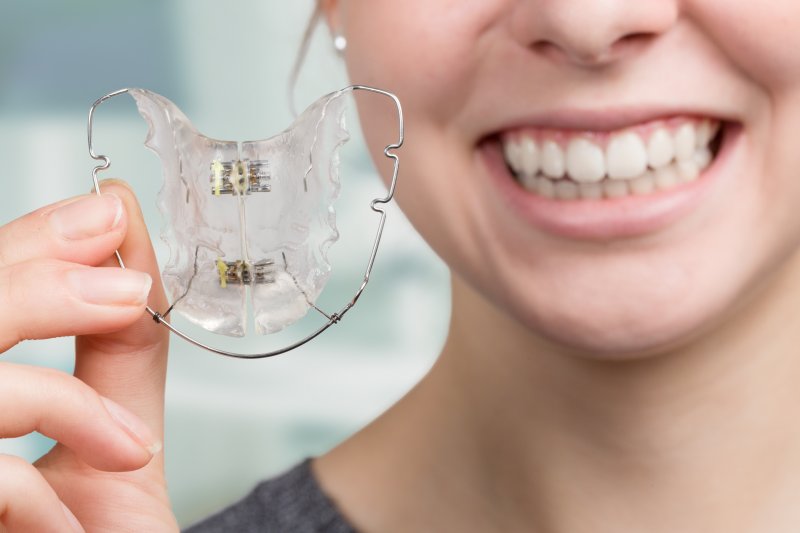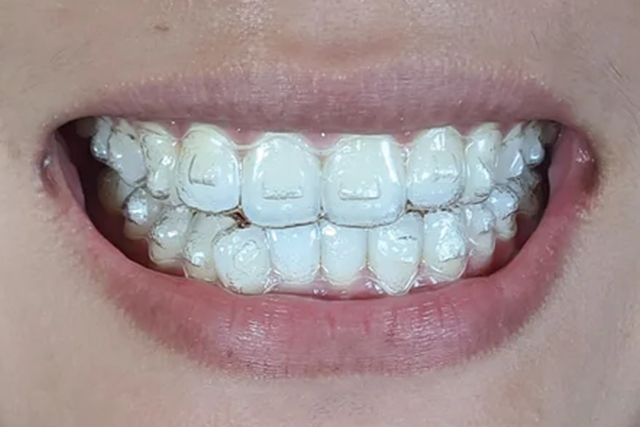The Price of Invisalign: Recognizing the Investment in Your Smile
The Price of Invisalign: Recognizing the Investment in Your Smile
Blog Article
Invisalign vs. Traditional Braces: Which Choice Is Right for You?
When taking into consideration orthodontic treatment, the selection between Invisalign and standard dental braces presents several important factors that warrant careful assessment. Invisalign offers a discreet alternative with detachable aligners, while typical braces supply a much more noticeable yet effective remedy for severe imbalance.
Overview of Therapy Options

On the other hand, traditional dental braces include steel braces and cables that are bonded to the teeth. This approach uses constant stress over time to accomplish alignment. While reliable for complex orthodontic issues, traditional braces require regular check outs for modifications and can present difficulties in maintaining oral health as a result of the problem of cleaning around braces and cords.
Both options have their advantages, and the choice usually rests on details dental problems, way of living preferences, and client conformity. Eventually, seeking advice from an orthodontic expert is crucial for establishing the most ideal treatment strategy tailored to private requirements. Understanding the subtleties of each alternative can significantly affect the total success of orthodontic treatment.
Visual Considerations
A substantial variable influencing the choice between Invisalign and typical dental braces is the visual allure each therapy provides. Invisalign aligners are crafted from clear plastic, making them virtually invisible when put on. This discreet look is specifically interesting adults and teens that might feel awkward concerning their orthodontic therapy. The capacity to maintain a natural smile throughout the placement procedure can dramatically boost the patient's confidence in expert and social settings.
In comparison, conventional dental braces contain steel brackets and cords, which can be much more visible. While innovations in orthodontic modern technology have led to the advancement of smaller braces and tinted elastics, traditional braces still keep an even more obvious profile. For some people, the exposure of dental braces may hinder them from looking for necessary therapy.
Inevitably, the choice between Invisalign and conventional braces may rest on individual choices pertaining to visual appeals. Patients that focus on discernment often lean toward Invisalign, while those who are much less concerned about exposure might choose typical dental braces. Understanding the aesthetic ramifications of each option is essential for making a notified decision that aligns with one's way of living and preferences.
Convenience and Convenience

In regards to ease, Invisalign aligners are detachable, allowing individuals to appreciate their preferred foods without constraint and maintain ideal oral health. Cleaning and flossing are simplified, as the aligners can be taken out throughout these routines, whereas conventional dental braces require cautious maneuvering around brackets and wires.
In comparison, typical dental braces demand routine adjustments, making them much less practical for those with busy timetables. Generally, the comfort and comfort of Invisalign make it an go to this site appealing selection for numerous individuals seeking orthodontic treatment.
Therapy Duration and Performance
While both Invisalign and conventional dental braces work in correcting dental misalignments, the period of treatment can differ substantially between both alternatives. Typically, Invisalign therapy can take anywhere from 12 to 18 months, relying on the complexity of the case. The clear aligners function by progressively shifting teeth right into their wanted positions, and normal follow-ups with an orthodontist help ensure development continues to be on track.
In contrast, typical braces typically need a longer dedication, typically ranging from 18 months to 3 years. This results from their fixed nature and making use of cords and braces, which can be more efficient for extreme imbalances and complex instances (Invisalign). The therapy efficiency of conventional dental braces is well-documented, as they allow for accurate modifications and higher control over tooth motion
Eventually, the selection in between Invisalign and typical dental braces might depend upon both the expected treatment period and the specific dental concerns handy. Consulting with an orthodontist is essential, as they can offer tailored referrals based upon private requirements, making certain the selected technique aligns with preferred end results and durations.
Cost Contrast and Insurance Alternatives
Cost plays a significant duty in the decision-making procedure for people thinking about orthodontic treatment, whether going with Invisalign or standard dental braces. Typically, the cost of Invisalign arrays from $3,000 to $8,000, while typical dental braces normally set you back click this link in between $2,000 and $6,000. Aspects influencing these prices include the complexity of the instance, the duration of treatment, and geographical location.
Numerous oral insurance policy strategies provide partial protection for orthodontic therapies, yet the specifics can vary commonly. Usually, traditional braces may be much more frequently covered by insurance coverage strategies contrasted to Invisalign, which some insurance companies classify as a cosmetic treatment.
In addition, several orthodontic techniques supply adaptable payment strategies, making both therapy options much more obtainable. Patients should ask regarding potential funding choices and discount rates for in advance repayments. Reviewing the complete price, consisting of insurance coverage benefits and payment plans, is vital for making a notified decision that aligns with both visual choices and spending plan factors to consider.

Conclusion
In recap, the option in between Invisalign and standard braces pivots on multiple aspects, including visual preferences, convenience, treatment duration, and price. Invisalign supplies a discreet, detachable choice that assists in dental hygiene and nutritional flexibility, while typical braces might be preferable for complicated oral problems and usually come with a lower price point. Ultimately, examination with an orthodontist is vital to analyze individual scenarios and determine one of the most suitable therapy alternative for achieving optimal dental placement.
When taking into consideration orthodontic treatment, the selection in between Invisalign and conventional braces provides numerous vital factors that merit cautious analysis.Comparing Invisalign and typical braces exposes unique treatment options for orthodontic improvement.While both Invisalign and typical dental braces are reliable in correcting dental misalignments, the duration of treatment can vary dramatically in between the 2 choices.Expense plays a substantial role in the decision-making procedure for people taking into consideration orthodontic therapy, whether deciding for Invisalign or typical dental braces.In recap, the selection in between Invisalign and typical dental braces pivots on several aspects, including visual choices, comfort, treatment duration, and price.
Report this page